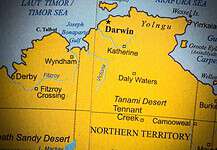ON 25 January, the tailings dam collapse at Vale’s Feijão mine near Brumadinho, Brazil, sent a torrent of sludge into the miner’s administrative area and surrounding Vila Ferteco community.
Traditional mineral processing methods require a significant amount of water to grind, wash and treat ore and tailings dams have been the primary waste disposal system to store slurry leftover from the plant.
The thick mud, if released, not only can have negative impacts on the environment, it could also pose a major safety risk to on-site workers and nearby communities.
In international operations like Brazil, the collapse of two dams in less than four years, has put wastewater management in mining to the front of discussions.
In late February, Brazil’s National Mining Agency ANM said it would ban upstream tailings dams and decommission all existing tailings dams by August 2021.
Mining giants like Rio Tinto and BHP have spoken up about the tailings issue also, identifying more needed to be done.
Rio Tinto chief executive J-S Jacques said the entire industry “has a responsibility to do better” and despite releasing a global standard for management of tailings and water storage facilities in 2015, it was again reviewing its global standard.
“We fully support the need for greater transparency which is why we disclosed detailed information on our tailing facilities and how they are actively managed. We will add to this over time,” Mr Jacques said.
In a statement, BHP said it would meet with a number of global bodies in February, and welcomed a common, international and independent body to oversee integrity of construction and operation of all tailings storage facilities across the industry.
International Council on Mining and Metals (ICMM) chief executive Tom Butler – which represents about 30 global mining companies – was another industry figure claiming things had to change.
Mr Butler said the council was “deeply saddened” by the recent disaster in Brazil, and would work with its members to learn every lesson from this catastrophe.
“We must improve in order to regain public confidence in the way we manage these facilities,” Mr Butler told The Australian Mining Review.
“The tailings dam failures in Brazil of recent times highlight the scale and complexity of the challenges faced by the industry on water.
“ICMM’s water stewardship and tailings management position statements are important steps towards improving members’ performance in managing this resource, but recent events show we have much more to do.”
Issues related to water were not just in processing or tailings either – they extended to sourcing safe and sufficient drinking water for workers, managing dust emissions, generating hydroelectric power and more.
Figures released this February showed that during 2016-17 an estimated 75,888 gigalitres of water was extracted from the environment to support the Australian economy – of which mining consumed 693 gigalitres (a 2 per cent increase from the year prior).
Many miners were already exploring water efficiency plans and technologies as part of their business planning.
Challenges cited included water access, the use and treatment of poor quality water, mine dewatering, as well as the management of excess water.
As ore grades declined in mining operations, the amount of water needed also generally increased, which posed another layer of issues.
International Stewardship
In 2017, the ICMM released new commitments on water stewardship and a practical guide for companies to follow for consistent water reporting.
ICMM chief Mr Butler said competing demands for water and tightening of environmental regulations around the world posed challenges that ICMM had been working to address for more than a decade.
It commitments set out in 2017 would require members to apply strong and transparent water governance; manage water at operations effectively; and collaborate to achieve responsible and sustainable water use.
Mr Butler said members had implemented the guidance in 2018, and were due to submit their first reports in 2019.
“Improvements will be measured over time against the 2018 benchmark,” Mr Butler said.
“These are significant first steps in obtaining consistent and comparable data across ICMM’s membership to improve performance on water management wherever members operate around the world.
“The policy also requires members to adopt a collaborative ‘catchment-based’ approach to water management that involves working with other users to ensure there is enough for all in an environmentally sustainable way.”
Mr Butler said while industry understanding and management of mine water quality had dramatically improved over the past decades, the sector was taking a preventative approach, evaluating risks of mine water well before mining begins.
“This way the risk can be addressed early, avoiding the need for chemical treatment, which is vital as mining activities can have a significant impact on the quantity (availability) and quality (e.g. impacts of acid rock drainage – mine water) of water resources,” he said.
“Many in the industry are using water treatment technologies to reduce reliance and increase availability of freshwater to local communities.
“In Peru, ICMM company member Freeport McMoRan built a wastewater treatment plant that uses treated wastewater for its Cerro Verde mine, provides drinking water to 300,000 people in the Arequipa region and improved local water quality, benefitting both the company and the community.”
Solutions
In Deloitte’s Tracking the Trends 2019 report released in January, the firm identified water management as one of the key trends rising to the top of mining companies agendas, and one of the greatest constraints to supply.
“In regions around the world, mining companies must now contend not only with risks around water scarcity, but also those associated with excess rainfall, which can result in flooding,” the report stated.
“According to the Climate Disclosure Project (CDP), 25 per cent of mining production, representing up to $US50 billion in annual revenue, could face water shortages and drought by 2030.
“As competition for water supplies mounts, many mining companies are taking steps to reduce water consumption, treat wastewater so that it can be recycled, and adopt innovations such as dry processing.
“These efforts, however, are often approached as isolated initiatives rather than enterprise-wide opportunities to achieve cost savings, improve environmental performance, and enhance regulatory compliance.”
The report suggested a systematic approach to water management was required – which would approach energy and water in tandem to help mining companies make business choices that optimise the use of both.
Deloitte’s Operational Risk & Sustainability director Michael Wood said historically there had been a clear linkage between the production of energy and water.
“There’s been a bit of a decoupling starting to happen now between energy and water with new technologies coming through such as wind, batteries, solar – these technologies aren’t necessarily water dependent,” Mr Wood said.
“However, they both go hand-in-hand.”
Deloitte also referenced new initiatives such as dry processing methodologies, reducing the amount of water required to store tailings, and even mining in ways that reduce impacts to surface and groundwater systems.
The company cited Anglo American as a pioneer in this space, which as part of its FutureSmart Mining Sustainability Strategy was gearing toward the development of a waterless mine at its Mogalakwena platinum mine in South Africa.
Goldcorp also continued to advance its Towards Zero Water strategy, implementing an EcoTails system which blended filtered tailings with waste rock in transit to create a geo-technically stable product called GeoWaste, which may help it eliminate tailings dams entirely.
Mr Wood said it was also important for miners to “go back to the basics” and understand the true value of water.
“It’s not a free commodity anymore,” he said.
“It may be free on the balance sheet but it’s not free in the eyes of the community and the eyes of stakeholders.
“There’s a value to it, and it’s about understanding that value.”
Mr Wood said as an industry, companies needed to ask themselves how they value water appropriately, and how they disclose that valuation to stakeholders in a consistent way.
He praised the ICMM water commitments framework, and said disclosure like this was a great step.
“Eventually [mining] could be like the oil and gas industry, where they have live readings that get put onto a publically available website, where you can see water quality,” he said.
“Those types of things will start to happen more, whether it will be greater transparency over the public being able to understand what is happening in a particular area and the impact of mining – whether that be positive or negative.
“Having the framework, establishes a method of baselining and comparing and all those types of things.”
“Water is an integral part of what we do, and without it we wouldn’t exist.”








































